Emergency and Egress Lighting with Sam Haberman
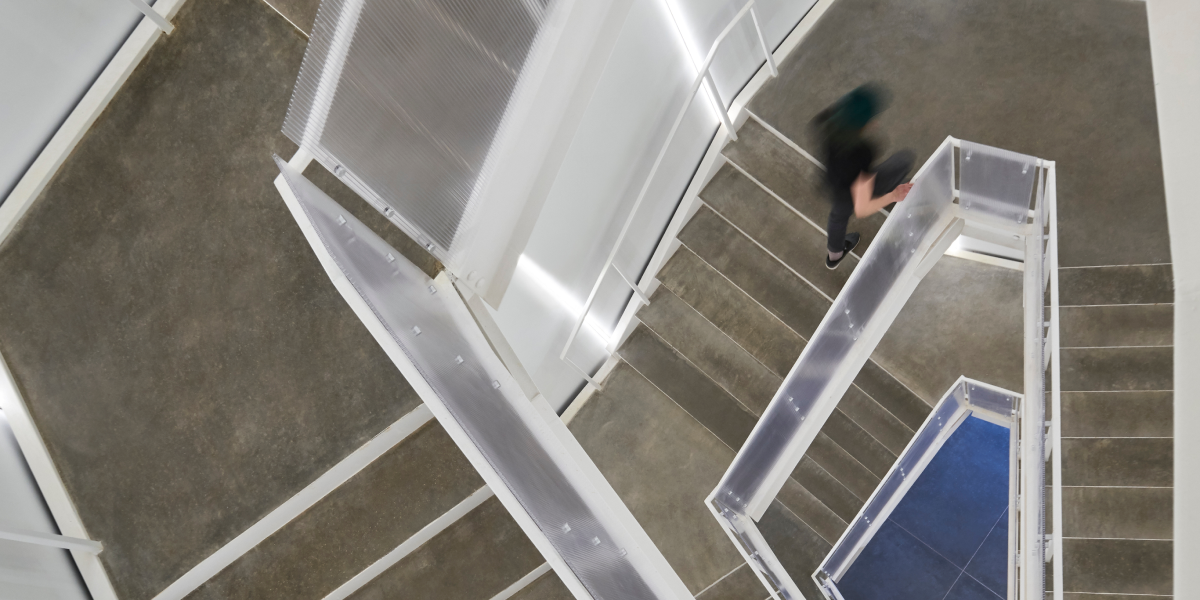

Critical Systems
The structures of today tout magnificent architectural features as well as human-centric elements that promote health and wellness. These exemplary features of the built environment require the behind-the-scenes support of mechanical, electrical, and plumbing (MEP) design and coordination. Ever present in these buildings are critical systems that have been necessary for decades such as emergency and egress lighting systems. These electrical systems require thoughtful attention in design to function properly when people need them most. Systems that go above and beyond the minimum requirements will merge seamlessly with a structure’s interior aesthetic as well as adhere to building code requirements. Emergency and egress lighting systems that are thoughtfully-construed with the interior design elements play an important role in achieving the desired effect of a space’s architectural intent.
Emergency vs. Egress Lighting: The Basics
Samuel Haberman, P.E., LC is a principal for Alvine Engineering and IP Design Group and a lighting-certified electrical engineer with 15 years of expertise in coordinating and designing emergency and egress lighting systems. Sam has offered continuing education courses accredited by the American Institute of Architects (AIA) on the subject of emergency and egress lighting and has also conducted lectures with the Illuminating Engineering Society’s (IES) Oklahoma City Chapter. He’s also presented at the IES National Conference and delivered a presentation for the National Electric Manufacturers Association’s (NEMA) Technical Subcommittee. Sam has been called upon as an expert by these organizations and has expressed the importance for the architectural community to understand the terminology regarding emergency and egress lighting and how they impact the overall egress path and shape of the lighting design.
Egress and emergency lighting are both essential to the functionality of a building. If an occupant must exit the building, a clear, unobstructed pathway out of the building must be illuminated to ensure that occupants can safely exit the structure. When a structure has a utility power outage, emergency lights are critical in allowing occupants to quickly identify building exits, stairwells, and allow them to safely orient themselves if they are isolated within a room or space.
In short, egress lighting illuminates the exit path during normal operation. Emergency lighting provides an illuminated egress pathway during a power outage. Emergency lighting also utilizes a power source independent of the primary utility source that automatically engages when there is loss of power to the building or lighting circuit. Sam highlights the importance of understanding the difference between the two in his presentations and the frequent confusion of the terms within the industry.
“I’ve often heard the two terms, egress and emergency, used interchangeably,” Sam explains, “It’s important not only for engineers to understand the differences between the two, but it’s advantageous for architects and clients as they think about how they want to shape their building interiors.”
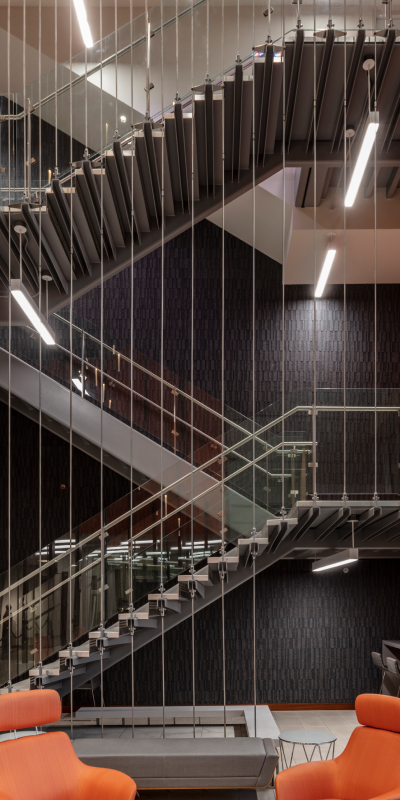
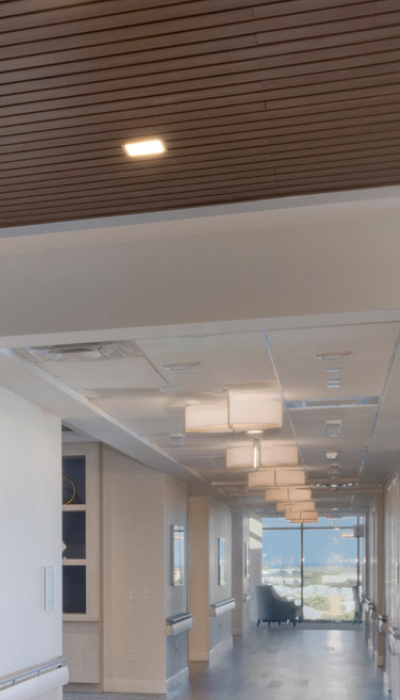
Know Your Codes
An extensive amount of codes exist that dictate both emergency and egress lighting that presents a significant challenge to an engineer’s liberty of architectural lighting design choices and implementation. Code requirements that dictate emergency and egress lighting solutions include the International Building Code, International Fire Code, International Energy Conservation Code, National Fire Protection Association (NFPA) 101, and the National Electric Code.
Emergency lighting is required to provide an average of one footcandle (fc) with a minimum of 0.1 fc on the walking surface for at least 90 minutes. Emergency lighting is required to activate within 10 seconds after initial loss of power. Variations in the level of illumination are not allowed to exceed a maximum-to-minimum uniformity ratio of 40:1.
Egress lighting must provide a minimum of one footcandle at the walking surface level of the egress path as long as the space(s) that utilize the path is occupied. Besides a few exceptions within NFPA 101, egress lighting may not be switched nor dimmed below one footcandle.
“Auditoriums are one space that allows egress lighting to be reduced to 0.2fc, but the lights must go back up to the required minimum of one footcandle upon activation of the fire alarm system.” Sam explains, “Generally when egress levels are dimmed below the required minimum, the lights must automatically brighten to the one footcandle minimum when the fire alarm system is triggered regardless of building type.”
Switching it Up
Recent developments have allowed lighting fixtures to be designed to serve the code requirement needs of both the emergency and egress lights. Sam explains that, through the application of a UL1008 transfer switch and dimmable lighting system options, lighting designs now have the ability to incorporate luminaires to accommodate emergency and egress codes in one lighting unit.
UL1008 transfer switch devices are defined in the National Electrical Code as branch circuit emergency lighting transfer switches (BCELTS). The UL1008 device is connected to two branch circuits: “normal” power (received through the public power grid) and emergency power. These devices allow the egress lights to also function as the emergency lights. As an added benefit, BCELTS can be outfitted with a dimming option that limits the electrical load distributed to the egress lights during an emergency condition, thereby reducing the required size of the emergency power source, whether that be a battery or generator.
“This was a hypothetical just a couple of years ago, but now it’s a viable possibility for clients,” Sam explains, “In the event that the normal power branch experiences an outage, the device automatically switches the lighting load to the emergency power branch circuit and dims the lighting to a preset level. Additionally, when a dimmable UL1008 device is used, it eliminates the necessity to run separate normal and emergency conduit routings to egress paths.”
Dimming control systems allow architects and engineers to utilize normal lighting units as egress lights by setting the minimum threshold to one footcandle as opposed to allowing the lights to completely deactivate. Low-voltage switches or occupancy sensors can be used to dim the luminaires to the code-required lighting minimum when not in use.
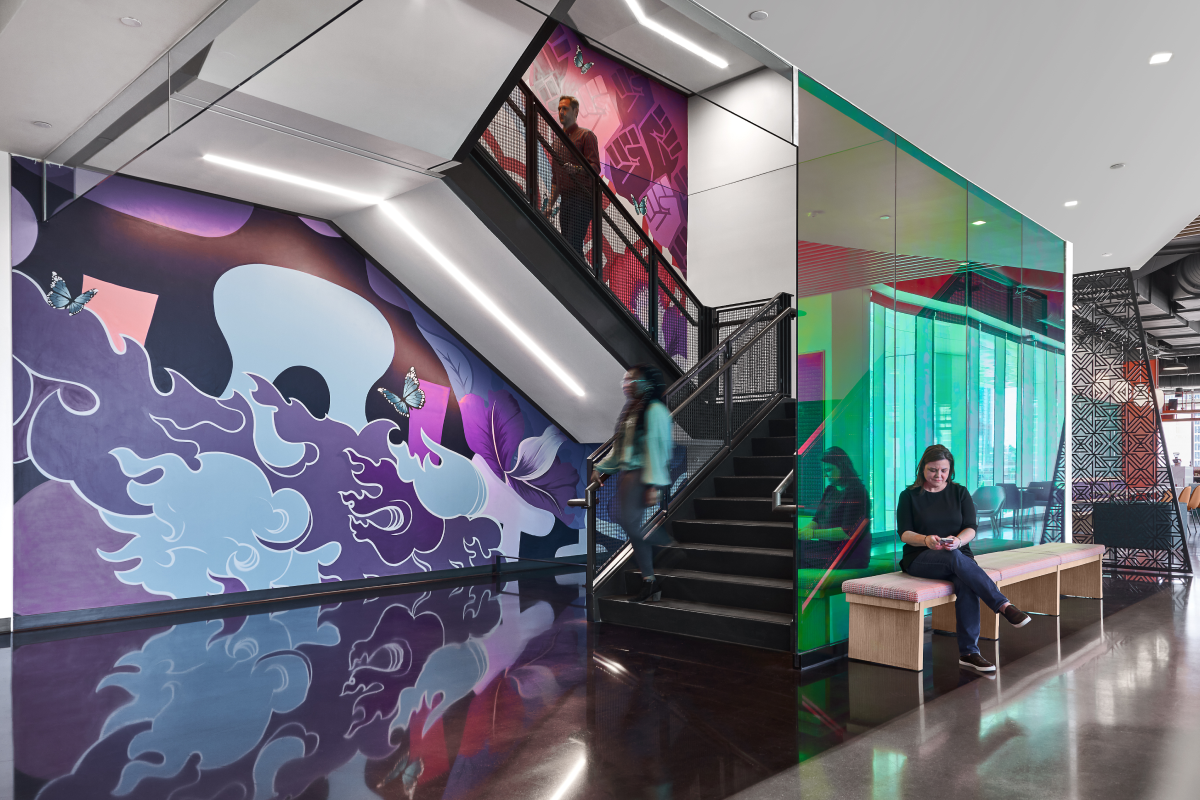
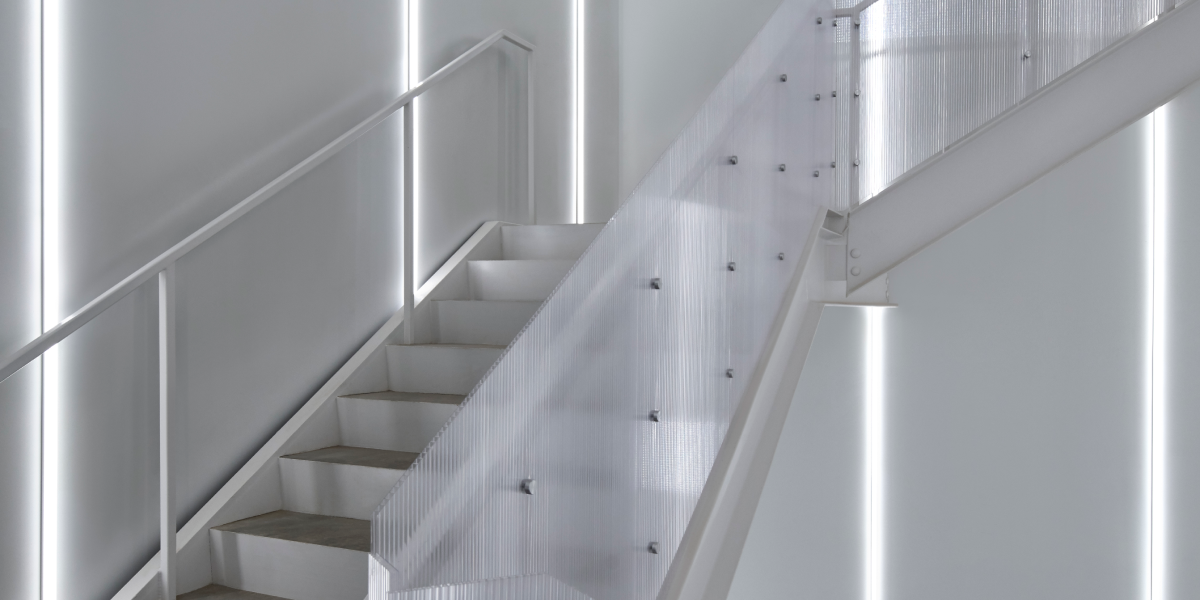
Crafting Solutions
Selecting a team with a solid track record in developing energy-efficient lighting systems that are built with strong redundancies and resilience qualities takes the uncertainty out of the construction document approval process and keeps building construction on schedule. It’s important that emergency lighting equipment is selected thoughtfully and is built to withstand sudden power surges and high temperatures.
Building strong relationships with AHJs and designing with their preferences in mind is what makes having electrical engineers like Sam so integral to the successful execution of project design documents and allows project teams to avoid certain design decisions that are not looked upon favorably by governing bodies. Designing with a highly-knowledgeable understanding of municipal code requirements and having a well-informed team provides future structures with high-performing designs that are delivered in-step with a client’s project requirements.
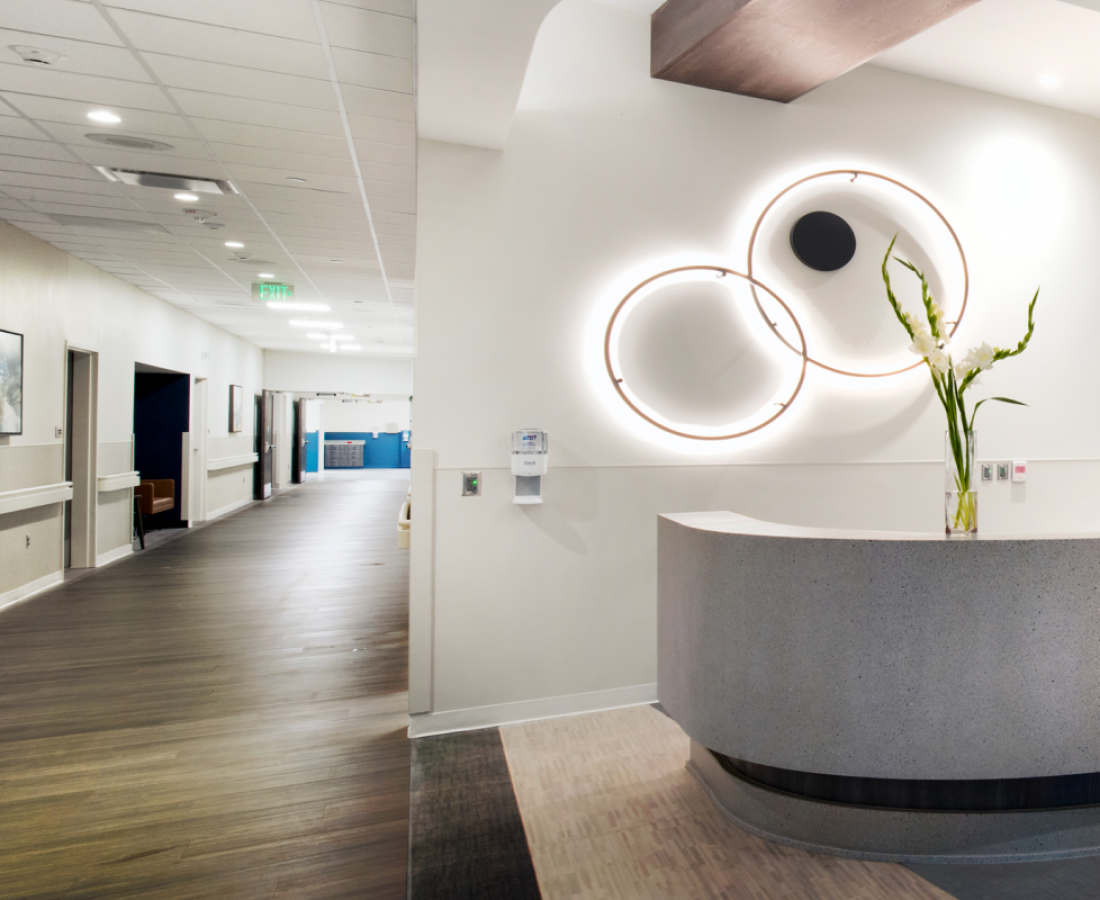
Challenges in Emergency and Egress Lighting Design
Building codes can be interpreted differently between authorities having jurisdiction (AHJs), making it all the more important to hire a consulting engineer with longstanding relationships with the local AHJ. One specific example that exemplifies the importance of this idea is designing with the definition of “public way” in mind. “Public way” not defined in any of the aforementioned code requirements. Common interpretations of “public way” include free egress from the building, the paved walking surface to a fire lane, or the property line, determining which definition to use varies from one authority to another.
As mentioned before, egress pathway lighting is required to provide one footcandle of illumination while the structure is occupied. However, stairwell egress lighting requires ten times the intensity (10 fc) during conditions of use which can cause design restraints on lighting designers and architects.
“The NFPA guidelines are strict when it comes to stairs,” Sam explained, “Sometimes, the architects we work with want to provide a creative lighting solution utilizing the heights in stairwells and the code puts a significant limitation on their ability to design or select luminaires that achieve the required lighting levels.”
Sam goes on to state that the failure of a single lighting unit should not result in illumination levels less than 0.2 fc, which means each space along the path of egress needs at least two lighting units. The code does not offer any specifics on the guidelines that constitute a lighting unit, allowing it to be open to interpretation by AHJs. However, Sam reiterates that engineers and designer should err on the side of caution and assume an AHJ will interpret the lighting fixture and the driver as a part of the “lighting unit.”




